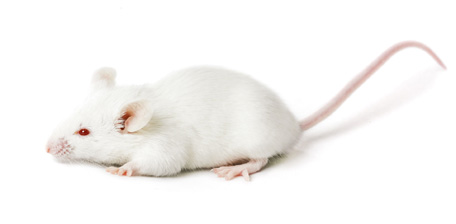Ebola and Marburg virus disease are infectious diseases caused by a group of viruses called the filoviruses. Once in the body, filoviruses damage blood vessels, interfere with coagulation and rapidly initiate a fatal, incurable hemorrhagic fever. They are attached to cell membranes and delivered to endosomes by the viral spike glycoprotein (GP), which also catalyses the fusion between the viral and endosomal membranes.
Other factors mediate the viral-endosomal membrane fusion, but attempts to identify them had been unsuccessful. In 2011, researchers led by Dr. Thijn R. Brummelkamp of the Whitehead Institute for Biomedical Research, Cambridge, Mass., succeeded (Carette et al. 2011). They found that the viruses exploit genes that regulate endosomal/lysosomal architecture and trafficking. One of these genes is the Nieman-Pick type C 1 (NPC1) gene, a gene normally associated with regulating intracellular cholesterol transport and, when defective, causes Nieman-Pick disease, type C.

To identify the factors other than GP that mediate filoviral entry and replication in a host's cells, the Brummelkamp team developed special "HAP1" cells, mutagenized them with a retroviral gene-trap vector, and infected the mutant cells with a viral construct bearing the Ebola glycoprotein. They developed a screen to isolate the Ebola-resistant cells and found that nearly all of them contain mutations in genes that regulate endosomal and/or lysosomal architecture and trafficking, including the genes encoding all six subunits of the "homotypic fusion and vacuole protein-sorting" (HOPS) multisubunit tethering complex, a complex that mediates endosome-lysosome fusion. The most commonly mutated gene was NPC1.
In all, the researchers identified 67 different HOPS and 39 different NPC1 mutations that make HAP1 cells Ebola-resistant. They substantiated the importance of the NCP1 locus in GP-mediated filoviral infection in subsequent experiments, garnering the following key evidence:
- Primary fibroblasts derived from NPC1-deficient people are resistant to GP-mediated filoviral infections and to authentic Ebola and Marburg viruses but are susceptible to many unrelated viruses.
- Npc1-null Chinese hamster ovary cells are completely resistant to GP-mediated filoviral infection.
- Npc1-deficient BALB/cNctr-Npc1m1N/J (003092) mice are resistant to either mouse-adapted Ebola or Marburg infections, but BALB/cJ (000651) controls rapidly succumb to them.
In summary, the Brummelkamp team's findings indicate that the Ebola and Marburg filoviruses enter host cells and replicate primarily by exploiting HOPS-encoding genes – notably the NCP1 locus – that regulate endosomal and/or lysosomal architecture and function. Their findings may lead to novel therapies for Ebola, Marburg and related filoviral diseases.